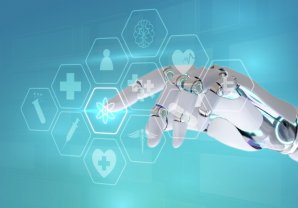
Medical Scribe Companies And How They Are Revolutionising Health Care Delivery
How Is Medical Scribing Transforming Modern Healthcare?
Medical professionals spend a long time entering patient visits into the electronic health record (EHR). The precise amount of time spent on these activities depends on the specialty. Still, studies suggest that documentation takes up between a quarter ( Prioritizing Paperwork Over Patient Care: Why Can't We Do Both? ) and a third ( Allocation of Physician Time in Ambulatory Practice: A Time and Motion Study in 4 Specialties ) of a doctor's working hours. These demands for documentation are constant. Doctors must update the EHR at some other time during the day, including the nights and weekends, if they cannot do so while seeing a patient. These expectations eventually have a substantial adverse influence on doctors. According to a recent study, working more hours is strongly tied to physicians' 42 percent burnout rate ( Factors Correlating to Burnout among Otolaryngology Residents ). As a result, many overworked medical professionals quit their jobs or significantly decrease the number of patients they treat, restricting access and raising costs for all patients.
Medical scribing is a ground-breaking advancement in the healthcare industry that makes it possible to manage patient data safely and instantly in your EMR. AI medical scribe is a specialist who can listen to a doctor and patient's conversation and translate it into pertinent information about the patient's health. So, while the scribe is actively documenting the patient's health record in real-time, the doctor utilizing a scribe is free to confer with and examine the patient. This is made feasible by giving the scribe access to the EMR and outfitting the exam rooms at the medical offices with high-quality microphones.
While not physically present during the examination, virtual medical scribing enables the scriber to listen to and transcribe the doctor-patient contact while inputting notes, CPT/ICD codes, eRx, and other pertinent data straight into the patient's file. The doctor discusses the patient records for the day with the medical Scribe through a secure VOIP connection, makes any necessary changes verbally, and then signs off. An on-site scribe must be present in person when the patient is being examined and manually enter information into the patient's chart. In contrast, this approach is more expensive, and patients may feel uneasy when a third person is present during a consultation or examination with a healthcare professional.
Instead of focusing on patient assessment, doctors spend more time updating electronic medical records (EMR) on computers. Additionally, the doctor must work on the charts after office hours. Medical scribe assists in easing the strain on doctors so they may focus more on the examination of the patient, generate more income by seeing more patients, and generally lead better lives.In many ways, machine learning and healthcare are particularly well matched for one another. A large portion of healthcare is based on pattern recognition. The many subsystems of a healthy human body operate in predictable, measurable ways. When a human body is ill, it deviates from this equilibrium in frequently predictable ways across time and populations. Using AI for administrative tasks in the healthcare industry might not seem exciting. But this presents a substantial potential for profit generation. Anyone interacting with the healthcare system knows it is rife with inefficiency and waste.
With a highly-trained robot medical scribe, S10.AI is revolutionizing medical practices nationwide. Robotic medical scribes are an addition that is telephonically introduced into the visit and records the information in the EHR. By the end of the visit, the robot medical scribes have finished writing the patient's chart; the doctor now only needs to check it for correctness. S10.AI frees doctors from the administrative duties that consume so much of their time and energy by offering more documentation assistance, allowing them to spend more time with patients and provide superior treatment. S10.AI is boosting patient encounter rates, cutting wait times at busy practices, or boosting traffic at new practices.







